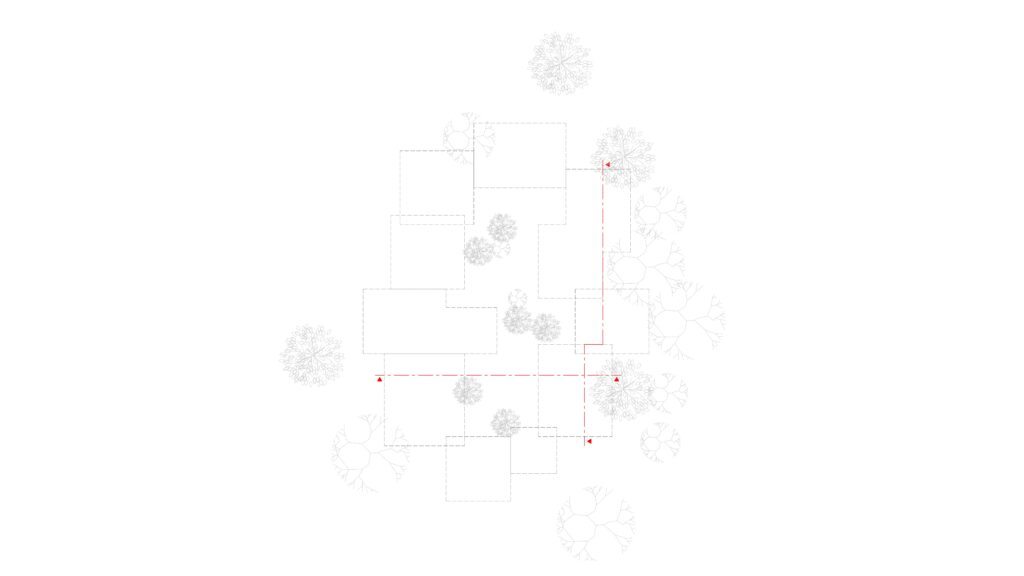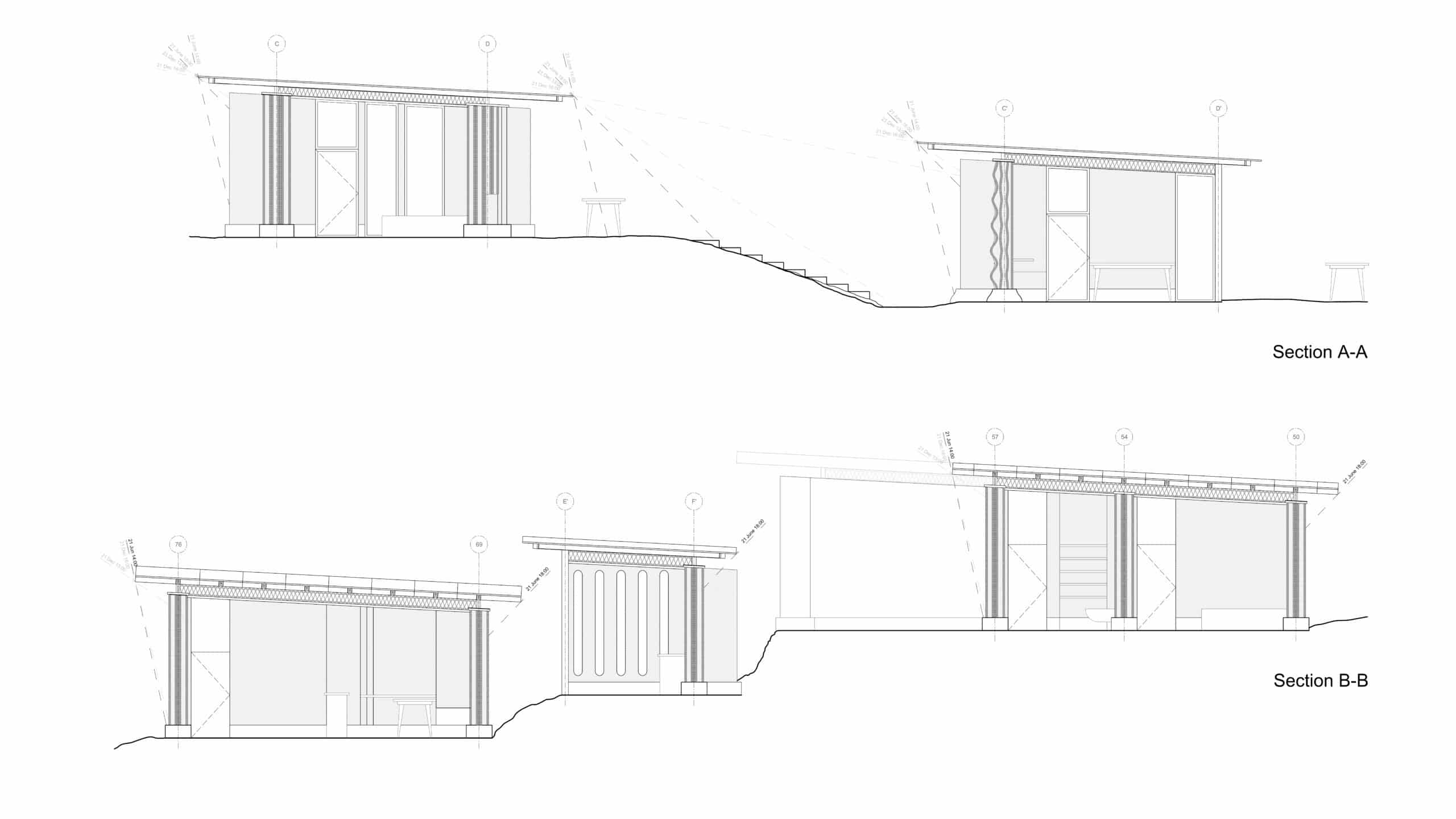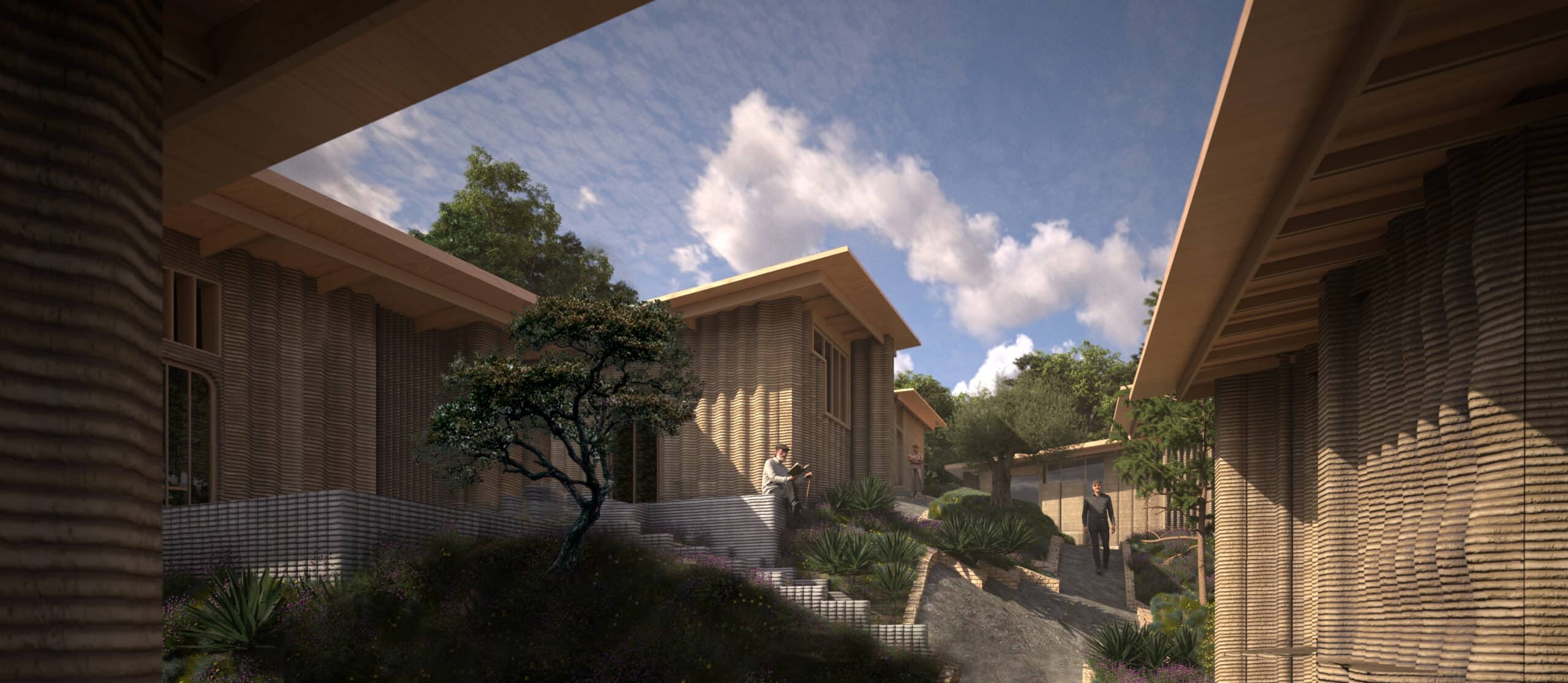
The Artist’s House is designed for an artist couple and their two children. The house is divided into 3 main entities: the living area, the studio and the artist house, separated by a central patio. The studio accommodates two distinct spaces tailored to the needs of each artist. One is a sculptor and/or painter who requires a well-lit space, while the other is an architect who prefers a more enclosed environment. To draw inspiration, both artists seek a connection to nature while remaining close to the city.
Nestled into the cliffs of Caserolla Park in Barcelona, the house bridges the natural landscape of the park with the urban environment. This 3D-printed earth house features climatically intelligent walls, constructed from soil excavated on-site. The layered earth walls respond to the house’s functions, creating a striking contrast between solid, enclosed surfaces and openings that frame views of the surrounding landscape.
Users l Program
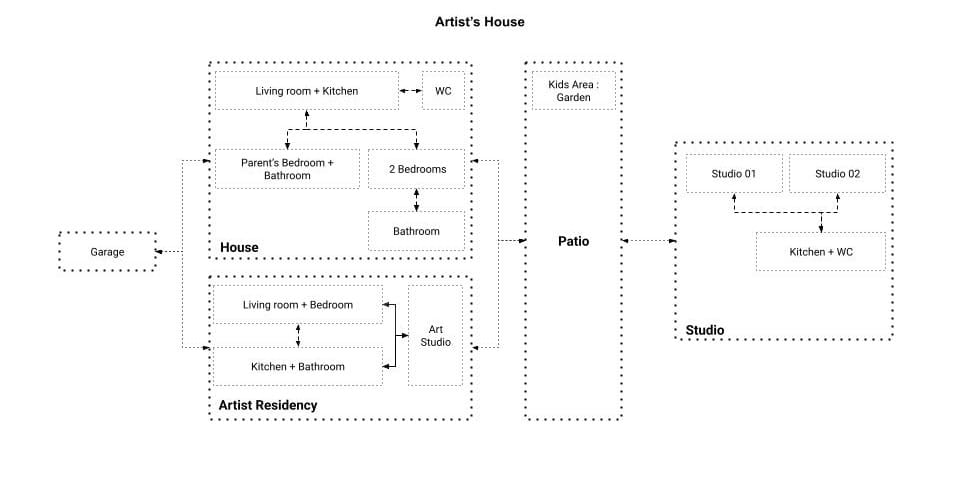
Project Location
The house connects the natural landscape of the park with the urban environment.
Shaded Area l Exposed Area
The Artist’s House is carefully positioned after studying the site’s exposure to the sun in both summer and winter. The house is located in an area where it is free from shadows cast by the cliffs, allowing it to fully benefit from the sun’s heat radiation, particularly in the warmer months. The project follows the contours of the cliff, with the longer side facing south-west and north-east.

Concept
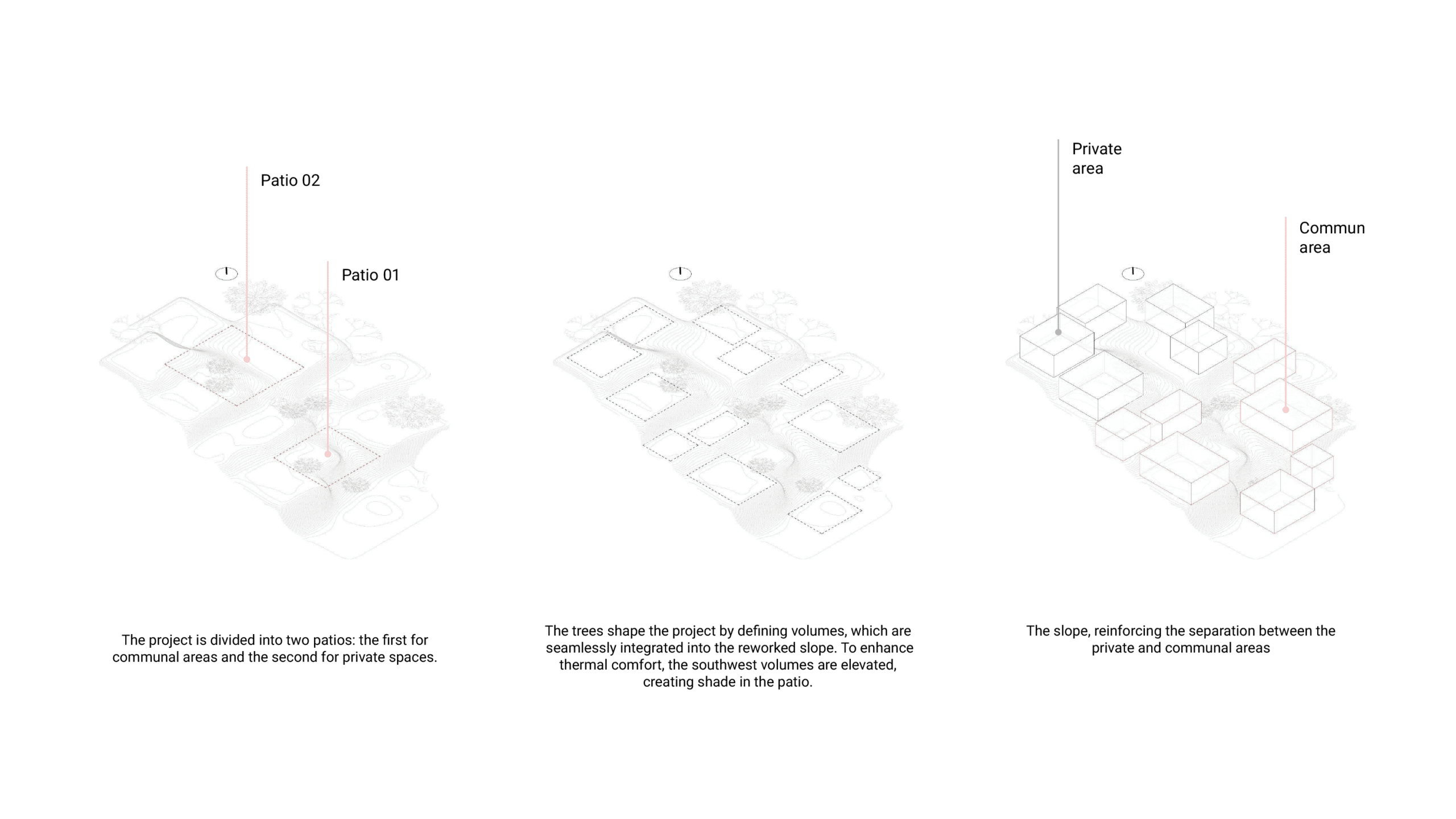
Concept
Program l Climate
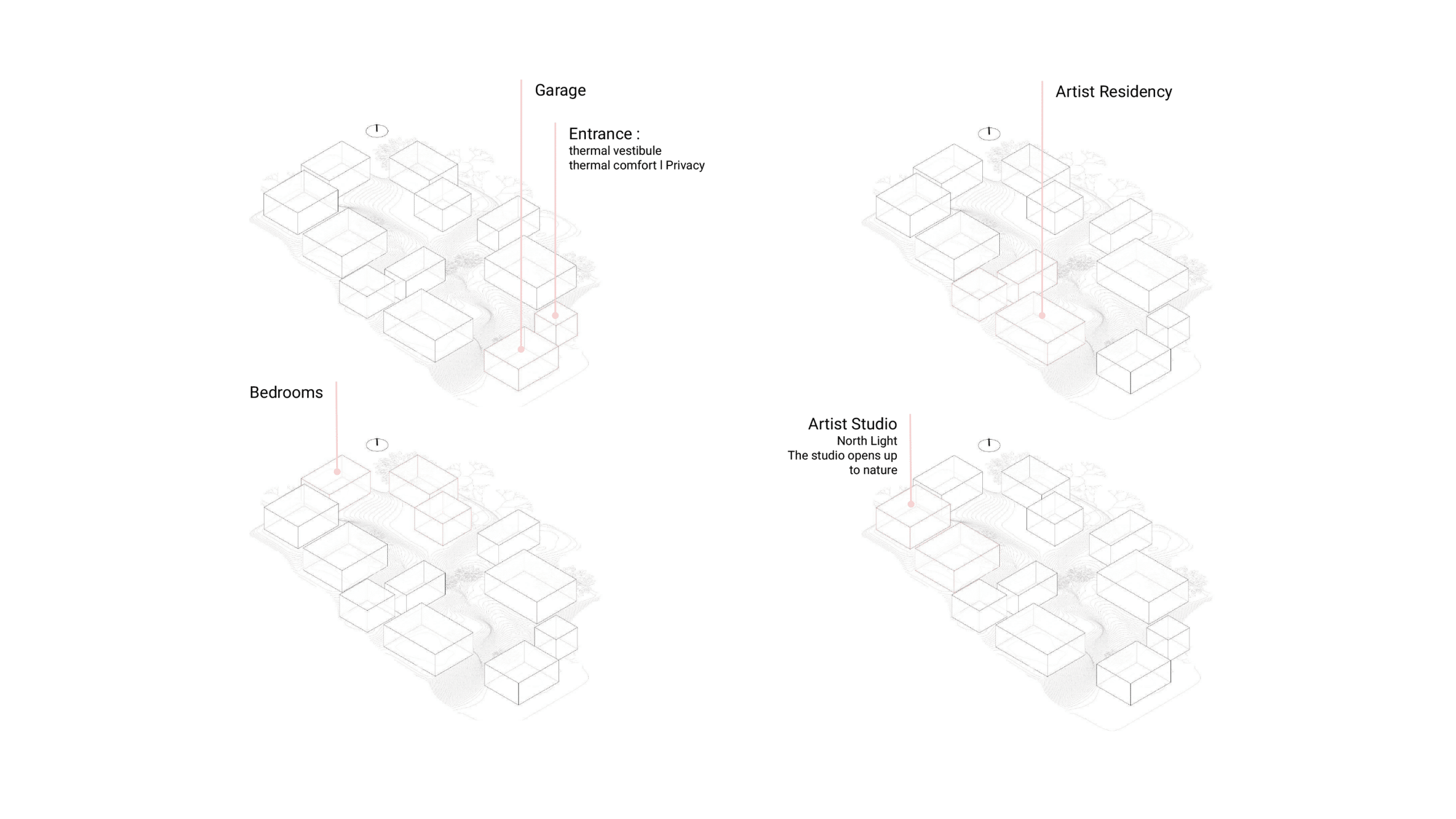
The Artist’s House is embedded in a long, sloping terrain that descends from west to east. The project benefits from the early morning sun and will be heated by solar radiation from the southwest during both summer and winter. The slope does not block the solar radiation from the southwest, allowing it to reach the building.
The project follows the contours of the cliff, with the longer side facing south-west and north-east. A buffer space, with a zigzag entrance, was created to form a thermal vestibule before entering the heart of the house, the pati. A buffer space, with a zigzag entrance, was created to form a thermal vestibule before entering the heart of the house, the patio.
Performative Walls
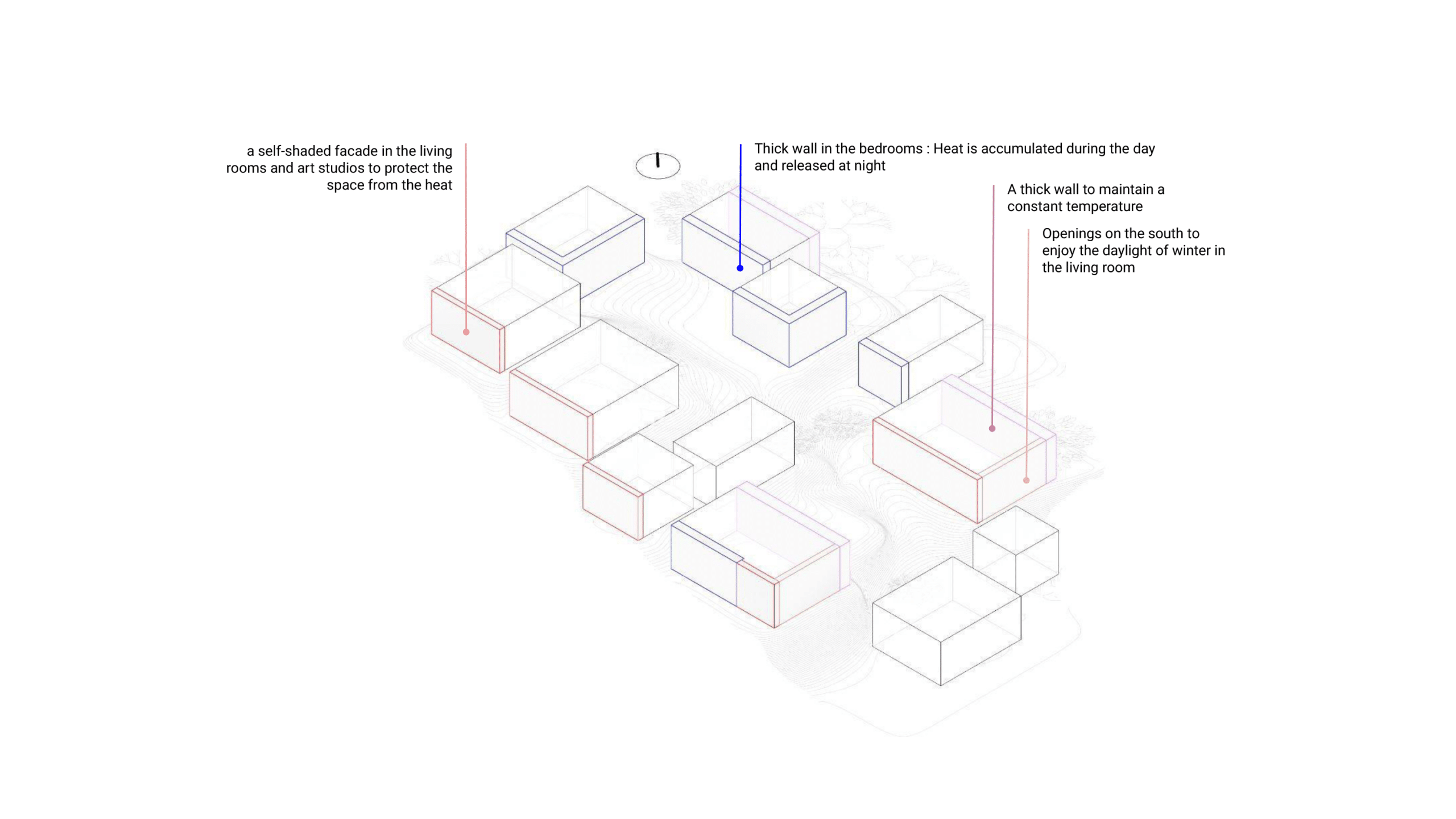
Each facade has a different climatic performance, influenced by the specific function of the spaces within the house.
The southwest facade is exposed to the sun during the hottest hours, especially in the summer. The performative walls of the south-west facades are adapted to the function of each room. The living room, used during the day, requires a thin, self-shading wall to minimise heat gain. However, the bedroom, which is used at night, will accumulate heat from the sun during the day and release it at night due to the thick wall without self-shading elements.
The south facade of the living rooms will incorporate openings to allow sunlight to enter and warm the interior during the winter.The north facade, due to its thickness, will help maintain a stable indoor temperature by insulating the interior from external temperature fluctuations.
Inside l Outside
Fireplace
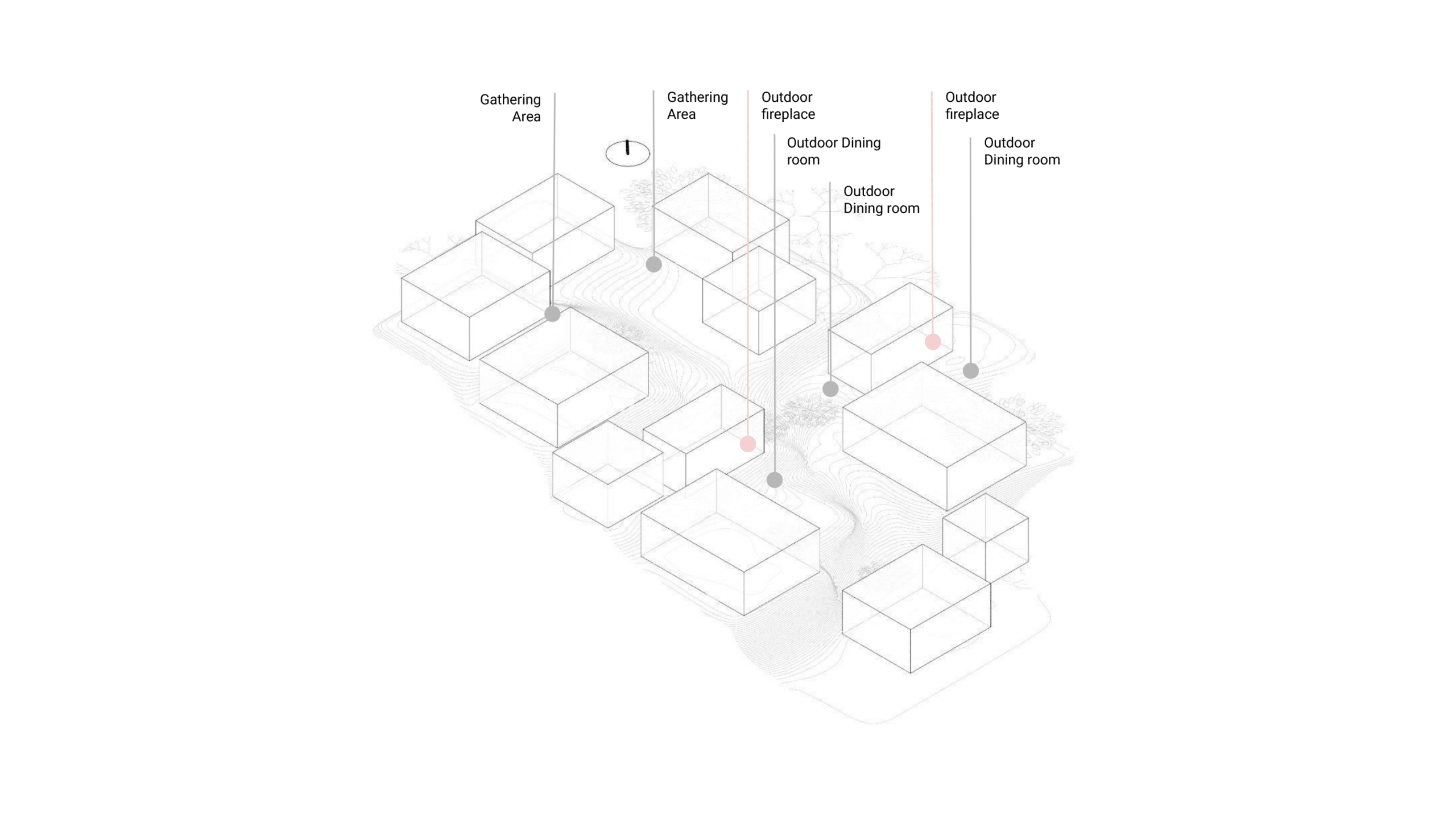

3D printing offers the flexibility to manipulate and shape walls, enabling the creation of various spatial features such as fireplaces, pass-through openings, and benches. Beyond their climate-responsive performance, these walls seamlessly integrate multiple functions into a unified and holistic design.
By creating outdoor fireplaces and gathering spaces, the project generates living areas not only within the built volumes but also in the exterior. The spatial experience extends beyond the interior, engaging the exterior as an active part of daily life.
As extensions of the buttresses, semi-open spaces are formed. Semi-open spaces emerge as extensions of the buttresses. These areas invite users to gather, relax, and connect, softening the boundary between interior and exterior life.
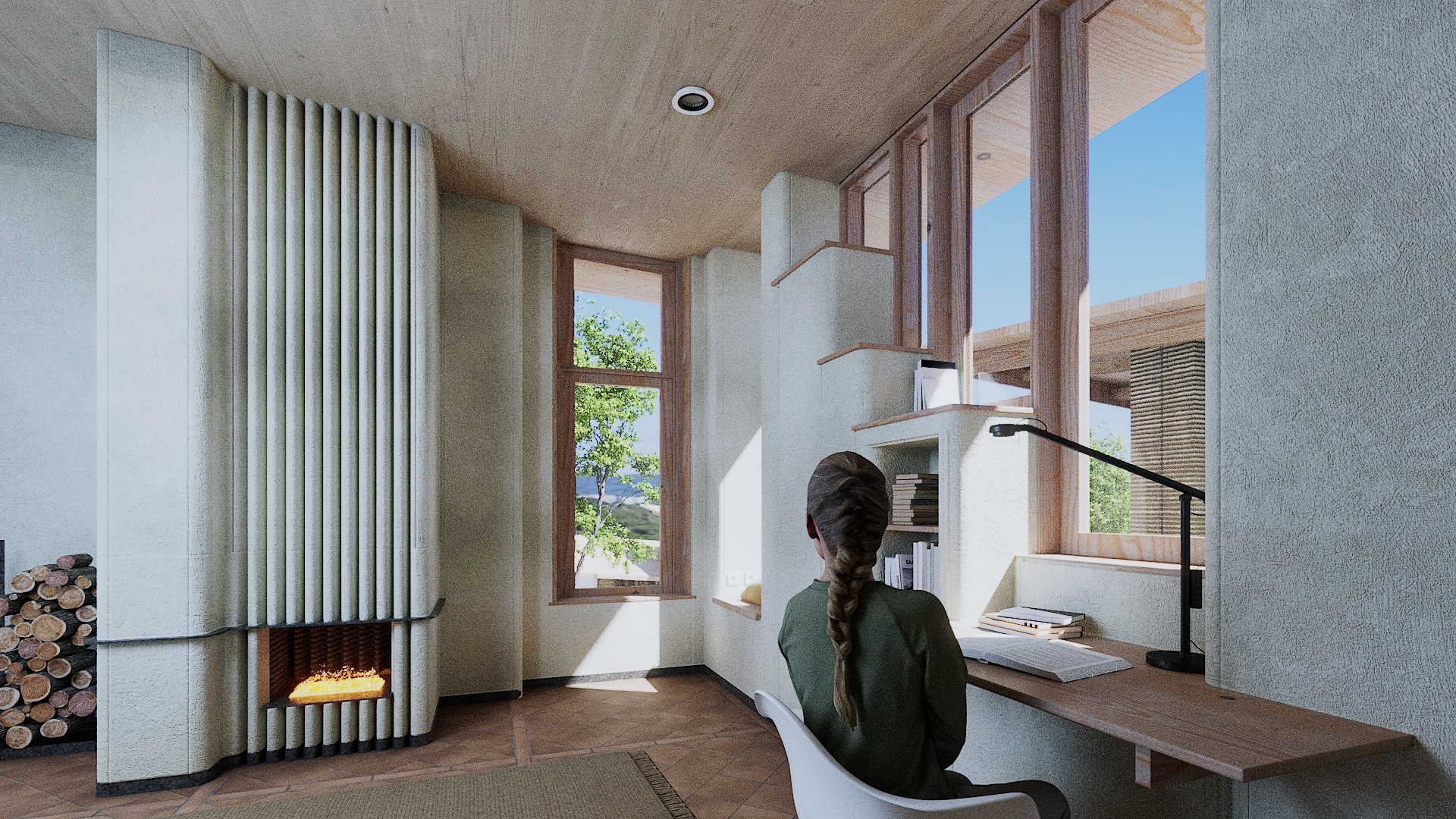
Plan
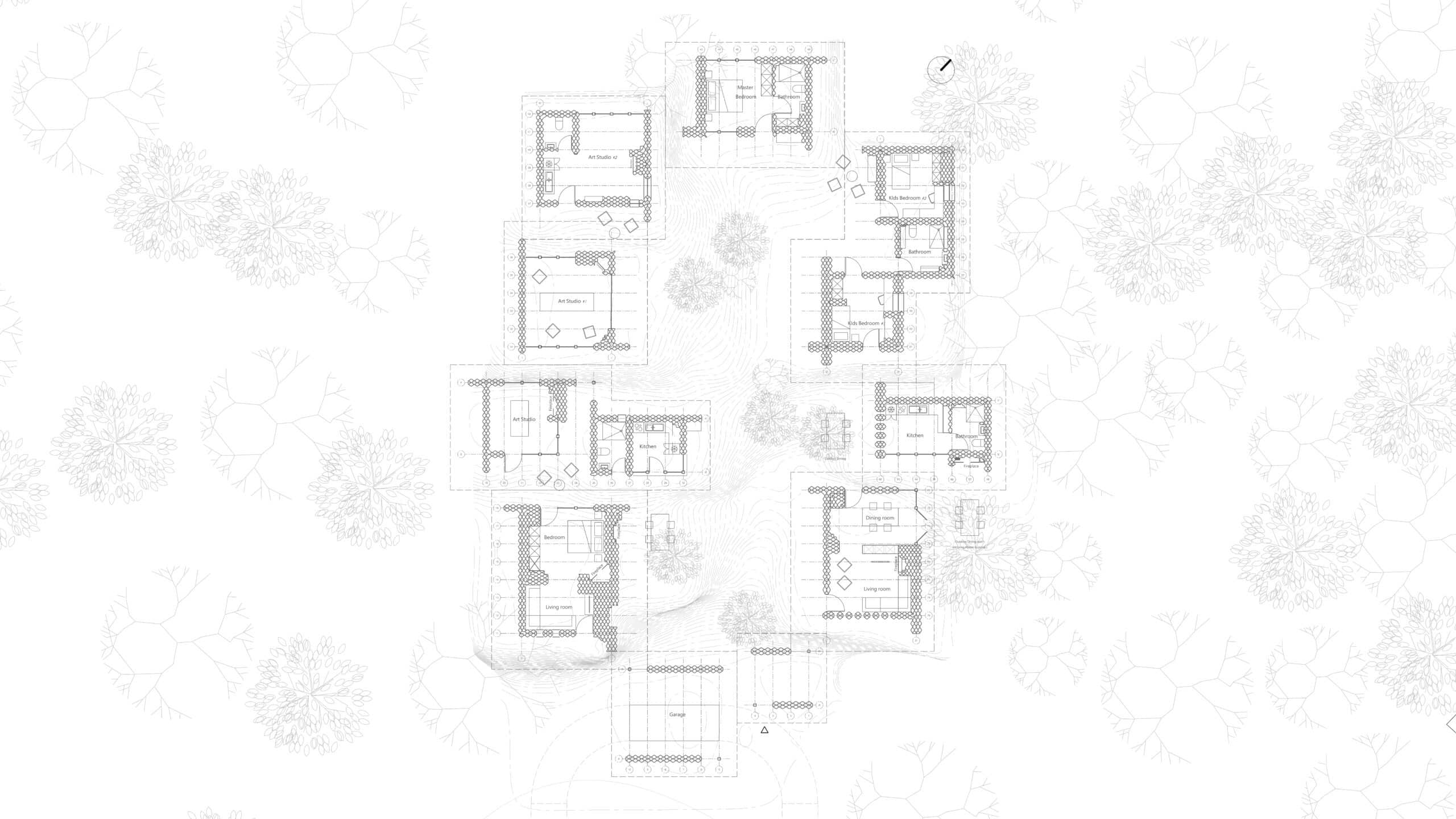
Sections
